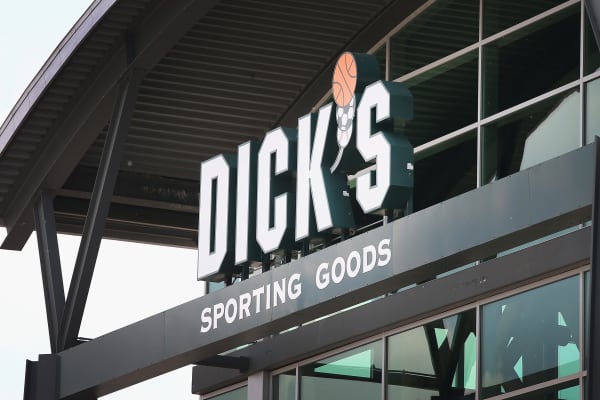After scooping up market share that its bankrupt competitors left behind, Ed Stack, CEO of Dick’s Sporting Goods, took a step back to diagnose the health of its core business.
His conclusion? While the sporting goods chain doesn’t suffer the same “symptoms of the disease” that his competitors “atrophied from and died,” that doesn’t mean it can sit idly by.
On a call with investors after Dick’s fiscal fourth-quarter earnings report, Stack outlined how his company will continue grabbing share amid consolidation in the industry. His strategy includes opening stores in markets where competitors’ bankruptcies left a gap, and targeting new customers in its existing markets where one of those chains has failed.
Meanwhile, Dick’s is looking to strengthen its assortment by cutting 20 percent of its lower-volume vendors to focus on its most important suppliers, and lean harder into its private brands.
The company’s plans weren’t enough to appease investors, who sent its shares nearly 9 percent lower. The sell-off came on the back of a disappointing first-quarter earnings outlook, and concerns that Dick’s market share gains would not persist to the same degree in the second half of the year.
“The consolidation in this industry’s not over,” Stack said.
At a time when many retailers are shuttering stores, Dick’s this fiscal year will open 43 locations under that nameplate, 19 of which are former Sports Authority stores. These shops will primarily target California, Texas and the Pacific Northwest, where Dick’s has a small footprint.
Stack said the company will be “patient” in site selection for future expansion, with retailers like Macy’s, J.C. Penney and others marking hundreds of large stores for closure. He meanwhile expects more market share to come up for grabs in the sporting goods industry, on top of the lift it’s received from the recent wind downs of The Sports Authority, Sport Chalet and Golfsmith chains.
Though he did not mention specific companies, the recent sale of Finish Line‘s 65 Jack Rabbit running stores — purchased for $0 — shows how competitive the crowded sporting goods market has become.
Investors have grown more cautious on the athletic goods space as a result of these struggles, and recent weakness at brands including Under Armour.
“There were some weak links and some companies that couldn’t survive,” Stack said, speaking to their high debt levels and lack of investment in their stores and online. “I don’t think this is something we get caught up in as long as we continue to manage and run our business.”
To differentiate itself from its remaining competitors, Dick’s is trimming its 1,600-strong vendor list by 20 percent to focus on its most important accounts. It will do so, for instance, by giving them additional square footage, while securing exclusive product for its stores.
The company took a $46 million write-down in the fiscal fourth quarter to eliminate the merchandise it will no longer carry.
None of the retailer’s top 10 vendors will be cut from its stores, Stack said, declining to provide more specifics. According to the chain’s latest 10-K filing, Nike represented 20 percent of Dick’s inventory in the year ended Jan. 30, 2016. It was followed by Under Armour at 12 percent.
Meanwhile, Dick’s plans to beef up its private-label business by launching two new brands and expanding its existing labels.
“This is a sensible step,” Neil Saunders, managing director of GlobalData Retail, told investors, adding that the stores’ assortments are sometimes “a little jumbled and undisciplined.”
“Some pruning should remedy this, and we believe it will reduce costs as well as deepening relationships with strategic partners, which will allow it to create differentiated products,” Saunders said.






